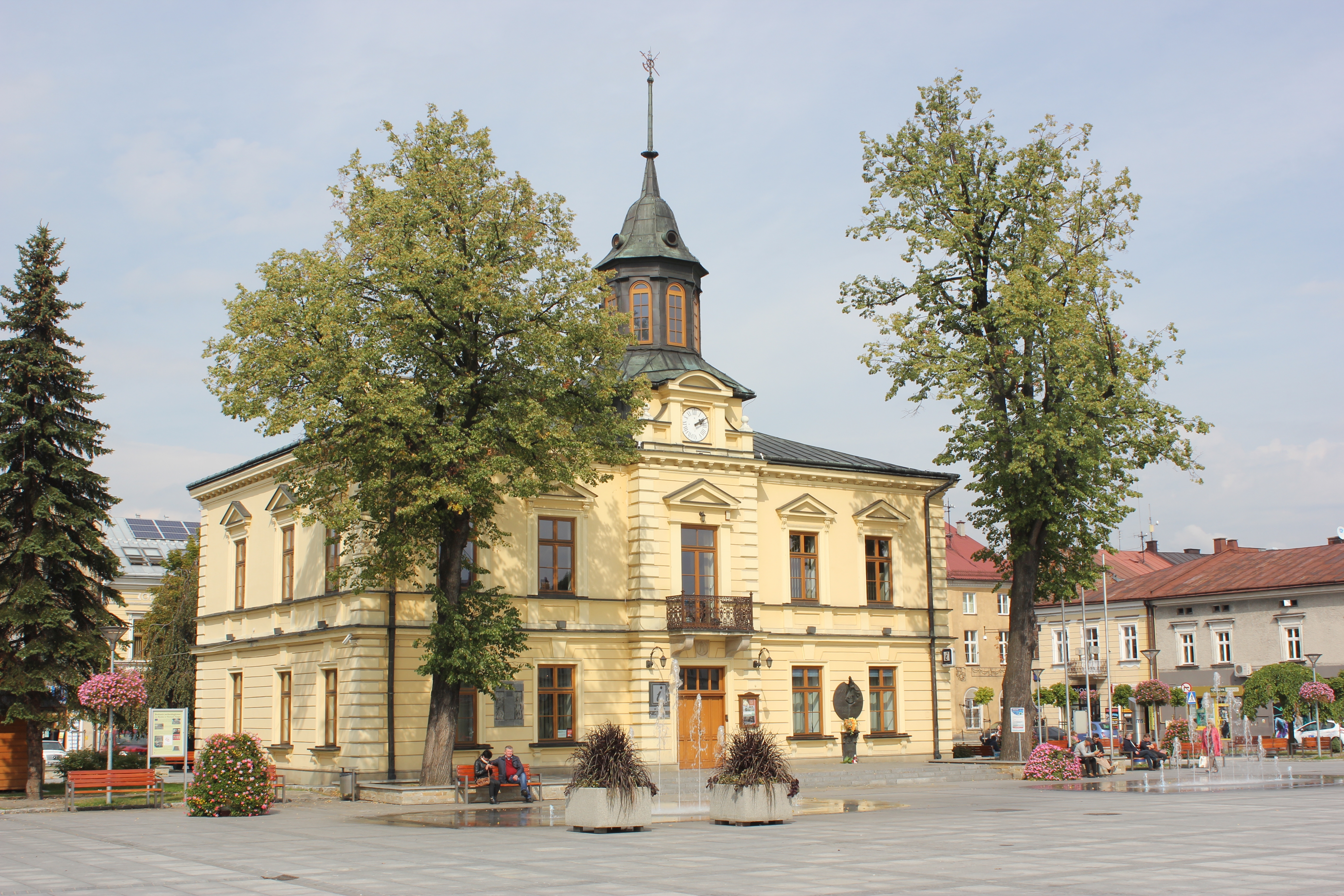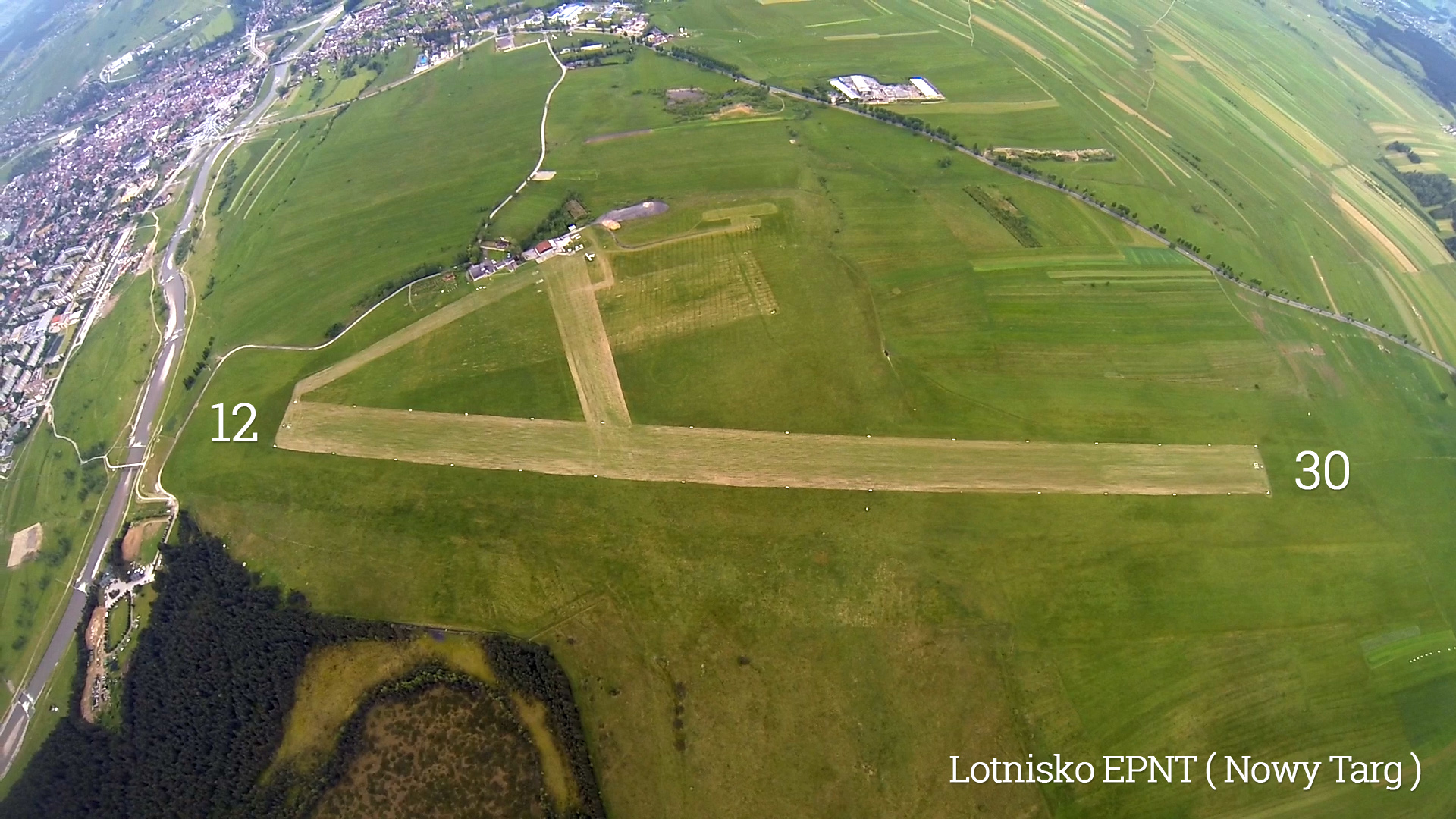|
Nowy Targ
Nowy Targ (Officially: ''Royal Free city of Nowy Targ'', Yiddish: ''Naymark'', Gorals, Goral dialect: ''Nowy Torg'' ) is a town in southern Poland, in the Lesser Poland Voivodeship. It is located in the Orava-Nowy Targ Basin at the foot of the Gorce Mountains, at the confluence of the Czarny Dunajec (river), Czarny Dunajec and the Biały Dunajec (river), Biały Dunajec. It is the seat of the Nowy Targ County and the rural Gmina Nowy Targ, as well as the Tatra Euroregion. With 33,293 inhabitants, Nowy Targ is the largest town and the historic capital of Podhale, as well as its main commercial, communication and industrial center. The town has the Podhale State Vocational University in Nowy Targ, Podhale State Vocational University and the Nowy Targ Airport, highest located airport in Poland. Established before 1233, Nowy Targ received city rights on 22 June 1346 from King Casimir III the Great, Casimir the Great. The historic architectural and urban complex of the town with a Mar ... [...More Info...] [...Related Items...] OR: [Wikipedia] [Google] [Baidu] |
Nowy Targ Airport
Nowy Targ Airport is a grass airfield serving Nowy Targ, Podhale, Poland, opened in 1930. In 1962 LOT Polish Airlines commenced a scheduled service between Nowy Targ and Warsaw, but this was terminated after 10 flights when it was decided to discontinue the use of grass airfields. References Airports in Poland Nowy Targ County Buildings and structures in Lesser Poland Voivodeship {{Poland-airport-stub ... [...More Info...] [...Related Items...] OR: [Wikipedia] [Google] [Baidu] |
Gmina Nowy Targ
__NOTOC__ Gmina Nowy Targ is a rural gmina (administrative district) in Nowy Targ County, Lesser Poland Voivodeship, in southern Poland. Its seat is the town of Nowy Targ, although the town itself is not part of the territory of the gmina. The gmina covers an area of , and as of 2006 its total population is 22,070. Villages Gmina Nowy Targ contains the villages and settlements of Dębno, Długopole, Dursztyn, Gronków, Harklowa, Klikuszowa, Knurów, Krauszów, Krempachy, Lasek, Łopuszna, Ludźmierz, Morawczyna, Nowa Biała, Obidowa, Ostrowsko, Pyzówka, Rogoźnik, Szlembark, Trute and Waksmund. Neighbouring gminas Gmina Nowy Targ is bordered by the town of Nowy Targ and by the gminas of Bukowina Tatrzańska, Czarny Dunajec, Czorsztyn, Kamienica, Łapsze Niżne, Niedźwiedź, Ochotnica Dolna, Raba Wyżna, Rabka-Zdrój and Szaflary. ReferencesPolish official population figures 2006 {{Nowy Targ County Nowy Targ Nowy Targ (Officially: ''Royal Free ci ... [...More Info...] [...Related Items...] OR: [Wikipedia] [Google] [Baidu] |
Tatra Euroregion
The Tatra Euroregion (, ) is a Polish-Slovak Euroregion established on August 26, 1994, pursuant to a declaration signed in Nowy Targ. The members are Polish towns of Nowy Targ, Rabka-Zdrój, Szczawnica, Limanowa and thirteen Polish border communes, as well as Slovak towns and villages of the districts of Liptovský Mikuláš, Poprad and Stará Ľubovňa. The seat of the Euroregion is located in Nowy Targ Nowy Targ (Officially: ''Royal Free city of Nowy Targ'', Yiddish: ''Naymark'', Gorals, Goral dialect: ''Nowy Torg'' ) is a town in southern Poland, in the Lesser Poland Voivodeship. It is located in the Orava-Nowy Targ Basin at the foot of the Go .... Days of Polish and Slovak culture are held under the auspices of the Euroregion. The main goals are environmental protection and economic development. References External links The official website of the Euroregion{{Euroregions Euroregions_of_Poland ... [...More Info...] [...Related Items...] OR: [Wikipedia] [Google] [Baidu] |
Cistercians
The Cistercians (), officially the Order of Cistercians (, abbreviated as OCist or SOCist), are a Catholic religious order of monks and nuns that branched off from the Benedictines and follow the Rule of Saint Benedict, as well as the contributions of the highly influential Bernard of Clairvaux, known as the Latin Rule. They are also known as Bernardines, after Bernard of Clairvaux, Saint Bernard, or as White Monks, in reference to the colour of their cowl, as opposed to the black cowl worn by Benedictines. The term ''Cistercian'' derives from ''Cistercium,'' the Latin name for the locale of Cîteaux, near Dijon in eastern France. It was here that a group of Benedictine monks from the monastery of Molesme Abbey, Molesme founded Cîteaux Abbey in 1098. The first three abbots were Robert of Molesme, Alberic of Cîteaux and Stephen Harding. Bernard helped launch a new era when he entered the monastery in the early 1110s with 30 companions. By the end of the 12th century, the ord ... [...More Info...] [...Related Items...] OR: [Wikipedia] [Google] [Baidu] |
General Government
The General Government (, ; ; ), formally the General Governorate for the Occupied Polish Region (), was a German zone of occupation established after the invasion of Poland by Nazi Germany, Slovak Republic (1939–1945), Slovakia and the Soviet Union in 1939 at the onset of World War II. The newly occupied Second Polish Republic was split into three zones: the General Government in its centre, Polish areas annexed by Nazi Germany in the west, and territories of Poland annexed by the Soviet Union, Polish areas annexed by the Soviet Union in the east. The territory was expanded substantially in 1941, after the German Operation Barbarossa, Invasion of the Soviet Union, to include the new District of Galicia. The area of the ''Generalgouvernement'' roughly corresponded with the Austrian part of the Polish–Lithuanian Commonwealth after the Third Partition of Poland in 1795. The basis for the formation of the General Government was the "Annexation Decree on the Administration o ... [...More Info...] [...Related Items...] OR: [Wikipedia] [Google] [Baidu] |
Occupation Of Poland (1939–1945)
During World War II, Poland was occupied by Nazi Germany and the Soviet Union following the invasion in September 1939, and it was formally concluded with the defeat of Germany by the Allies in May 1945. Throughout the entire course of the occupation, the territory of Poland was divided between Nazi Germany and the Soviet Union (USSR), both of which intended to eradicate Poland's culture and subjugate its people. In the summer-autumn of 1941, the lands which were annexed by the Soviets were overrun by Germany in the course of the initially successful German attack on the USSR. After a few years of fighting, the Red Army drove the German forces out of the USSR and crossed into Poland from the rest of Central and Eastern Europe. Sociologist Tadeusz Piotrowski argues that both occupying powers were hostile to the existence of Poland's sovereignty, people, and the culture and aimed to destroy them. Before Operation Barbarossa, Germany and the Soviet Union coordinated th ... [...More Info...] [...Related Items...] OR: [Wikipedia] [Google] [Baidu] |
Slovakia
Slovakia, officially the Slovak Republic, is a landlocked country in Central Europe. It is bordered by Poland to the north, Ukraine to the east, Hungary to the south, Austria to the west, and the Czech Republic to the northwest. Slovakia's mostly mountainous territory spans about , hosting a population exceeding 5.4 million. The capital and largest city is Bratislava, while the second largest city is Košice. The Slavs arrived in the territory of the present-day Slovakia in the 5th and 6th centuries. From the late 6th century, parts of modern Slovakia were incorporated into the Pannonian Avars, Avar Khaghanate. In the 7th century, the Slavs played a significant role in the creation of Samo's Empire. When the Avar Khaghanate dissolved in the 9th century, the Slavs established the Principality of Nitra before it was annexed by the Great Moravia, Principality of Moravia, which later became Great Moravia. When Great Moravia fell in the 10th century, the territory was integrated i ... [...More Info...] [...Related Items...] OR: [Wikipedia] [Google] [Baidu] |
Staple Right
The staple right, also translated stacking right or storage right, both from the Dutch , was a medieval right accorded to certain ports, the staple ports. It required merchant barges or ships to unload their goods at the port and to display them for sale for a certain period, often three days. Only after that option had been given to local customers were traders allowed to reload their cargo and travel onwards with the remaining unsold freight. Limited staple rights were sometimes given to towns along major trade-routes like Görlitz, which obtained staple rights for salt and woad, and Lviv gained them in 1444. A related system existed in medieval and Tudor England, covering the sale and export of wool and leather and known as '' the Staple''. Germany Staple rights can be compared to the market rights, the right to hold a regular market, as they were extremely important for the economic prosperity of the river cities that possessed such rights, such as Leipzig (1507), Mainz and ... [...More Info...] [...Related Items...] OR: [Wikipedia] [Google] [Baidu] |
Crown Of The Kingdom Of Poland
The Crown of the Kingdom of Poland (; ) was a political and legal concept formed in the 14th century in the Kingdom of Poland, assuming unity, indivisibility and continuity of the state. Under this idea, the state was no longer seen as the Patrimonialism, patrimonial property of the monarch or dynasty, but became a common good of the political community of the kingdom. This notion allowed the state to maintain stability even during periods of interregnum and paved the way for a unique political system in Poland, characterized by a noble-based parliament and the Free election (Poland), free election of the monarch. Additionally, the concept of the Crown extended beyond existing borders, asserting that previously lost territories still rightfully belonged to it. The term ''Crown of the Kingdom of Poland'' also referred to all the lands under the rule of the Polish king. This meaning became especially significant after the Union of Lublin, union with the Grand Duchy of Lithuania, w ... [...More Info...] [...Related Items...] OR: [Wikipedia] [Google] [Baidu] |
Royal City In Polish–Lithuanian Commonwealth
In the history of Poland, a royal city or royal town () was an urban settlement within the crown lands (). The most influential royal cities enjoyed voting rights during the free election period in Poland (1572–1791). These cities were Gdańsk, Warsaw, Kraków, Poznań, Lwów, Wilno, Toruń, Lublin, Kamieniec and Elbląg. Other important royal cities included Gniezno (ecclesiastical capital of Poland and former capital of early medieval Poland), Płock (former capital of medieval Poland), Piotrków (second most important political center of Poland in the early and mid-16th century as the main location of the Sejm, and then the main Crown Tribunal location alongside Lublin, thus one of the two judiciary capitals of Poland), Grodno (''de facto'' capital of the Polish–Lithuanian Commonwealth in the 1580s and then the general sejm location alongside Warsaw), Bydgoszcz and Kalisz (temporary locations of the Crown Tribunal), and Sandomierz, Przemyśl, Kazimierz. Law on the Cities ... [...More Info...] [...Related Items...] OR: [Wikipedia] [Google] [Baidu] |
Market Square, Nowy Targ
The Market Square ( ) in Nowy Targ is located in the center of the town. It was laid out for the first time in 1346, when the city was founded. There are 8 streets leading to the Market Square - two to each corner: Szaflarska St and Harcerska St to the south-eastern corner, John III Sobieski St and Tadeusz Kościuszko St to the north-east one, Catherine of Alexandria, St. Catherine St and Szkolna St to the north-west one, and Kolejowa St and Casimir III the Great St to the south-west one. It has the shape of a rectangle with the dimensions of 138 x 110 m, which gives the area of . Buildings on the Market Square Town hall The town hall building in Nowy Targ is a two-story Neoclassical architecture, neoclassical building. It dates back to the mid-nineteenth century. At the front of the town hall stands a clock tower with a glass Roof lantern, lantern, covered with a cupola with a spire. The town hall stands on the site of an earlier building with the same function. The descr ... [...More Info...] [...Related Items...] OR: [Wikipedia] [Google] [Baidu] |






